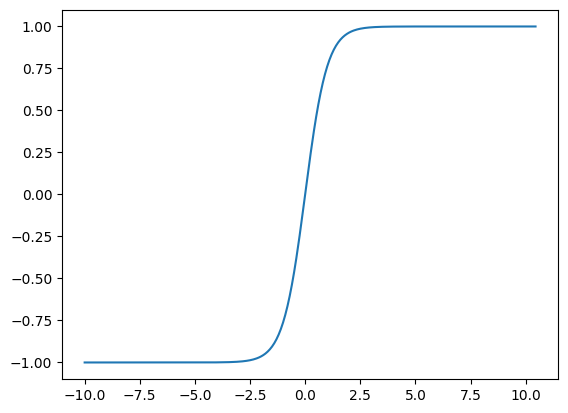Hyperbolic Tangent#
Note
Hyperbolic tangent is also called tanh for short.
Introduction#
Tanh is used when you want to limit the range of the output to \( (-1, 1) \). It looks like sigmoid.
How does tanh look, and how it works in code?#
%matplotlib inline
import numpy as np
from matplotlib import pyplot as plt
def tanh(x):
exp = np.exp(x)
inv_exp = 1 / exp
return (exp - inv_exp) / (exp + inv_exp)
x = np.arange(-10, 11)
y = tanh(x)
print("x =", x)
print("y =", y)
x = [-10 -9 -8 -7 -6 -5 -4 -3 -2 -1 0 1 2 3 4 5 6 7
8 9 10]
y = [-1. -0.99999997 -0.99999977 -0.99999834 -0.99998771 -0.9999092
-0.9993293 -0.99505475 -0.96402758 -0.76159416 0. 0.76159416
0.96402758 0.99505475 0.9993293 0.9999092 0.99998771 0.99999834
0.99999977 0.99999997 1. ]
x = np.arange(-200, 210) / 20
y = tanh(x)
plt.plot(x, y)
plt.show()

Notice that the range of tanh function is in the range \( (-1, 1) \) instead of \( (0, 1) \) like sigmoid.
